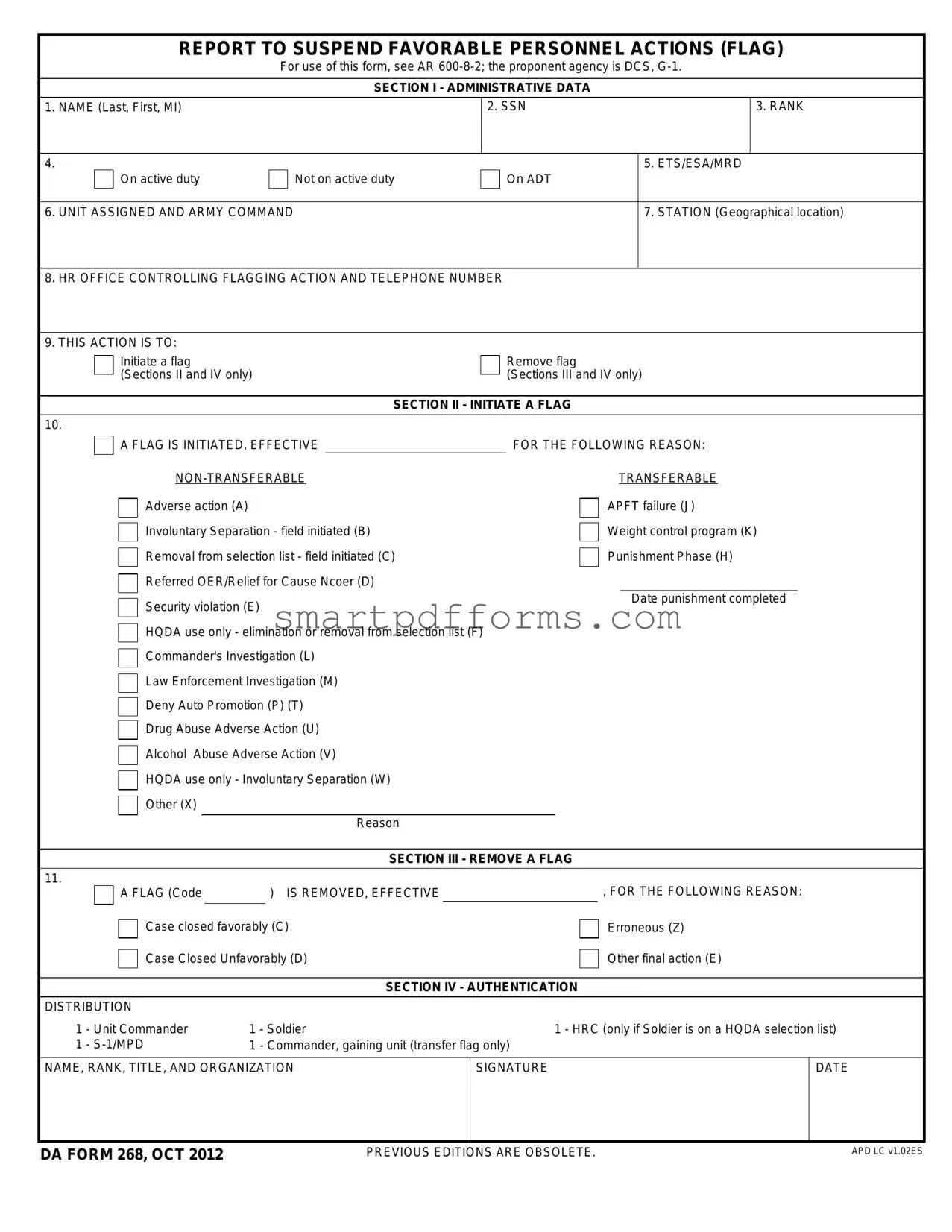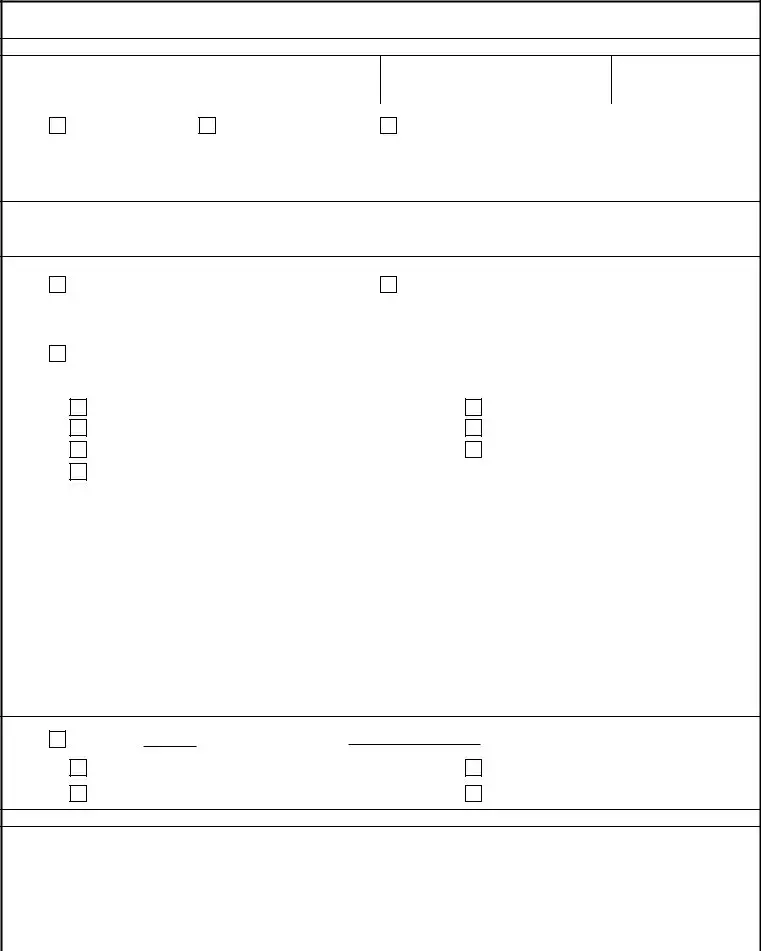- What is the DA Form 268?
The DA Form 268, also known as the Report to Suspend Favorable Personnel Actions (Flag), is a document used by the United States Army. This form serves to report actions that suspend any favorable personnel actions, or "flags," on a soldier's record. These actions could be due to various reasons, including adverse actions, physical fitness test failures, and more. The form is regulated by AR 600-8-2, with the DCS, G-1 as the proponent agency.
- When is a DA Form 268 initiated?
A DA Form 268 is initiated under several circumstances, such as adverse actions against a soldier, failure to pass the Army Physical Fitness Test (APFT), weight control program issues, and security violations, among others listed under Section II of the form. These situations warrant the suspension of favorable personnel actions until they are resolved.
- How can a flag be removed from a soldier's record?
The removal of a flag requires the initiation of Section III of the DA Form 268. Flags can be removed for various reasons, including when a case is closed favorably for the soldier, if the flagging was found to be erroneous, or after other final action has been completed. The date and reason for the flag removal are documented on the form.
- What are transferable and non-transferable flags?
Flags are categorized as either transferable or non-transferable, depending on the nature of the flag. Transferable flags, such as those initiated for law enforcement investigations or commander's investigations, can be transferred with the soldier to a new unit. Non-transferable flags, like those for APFT failure or adverse action, remain with the soldier's current unit until they are resolved.
- Who receives distribution of the DA Form 268?
The distribution of the completed DA Form 268 includes multiple copies sent to the unit commander, the soldier concerned, the Human Resources Command (HRC) particularly if the soldier is on a HQDA selection list, the S-1/MPD, and the commander of the gaining unit if the flag is transferable.
- How is a DA Form 268 authenticated?
Authentication of the DA Form 268 is done in Section IV, which requires the name, rank, title, and organization of the individual initiating or removing the flag, along with their signature and the date of the action.
- Where can one find the regulations governing the use of DA Form 268?
The regulations for the use of DA Form 268 are found in AR 600-8-2. This Army Regulation provides comprehensive guidance on reportable actions and the process for initiating and removing flags from a soldier's record.

